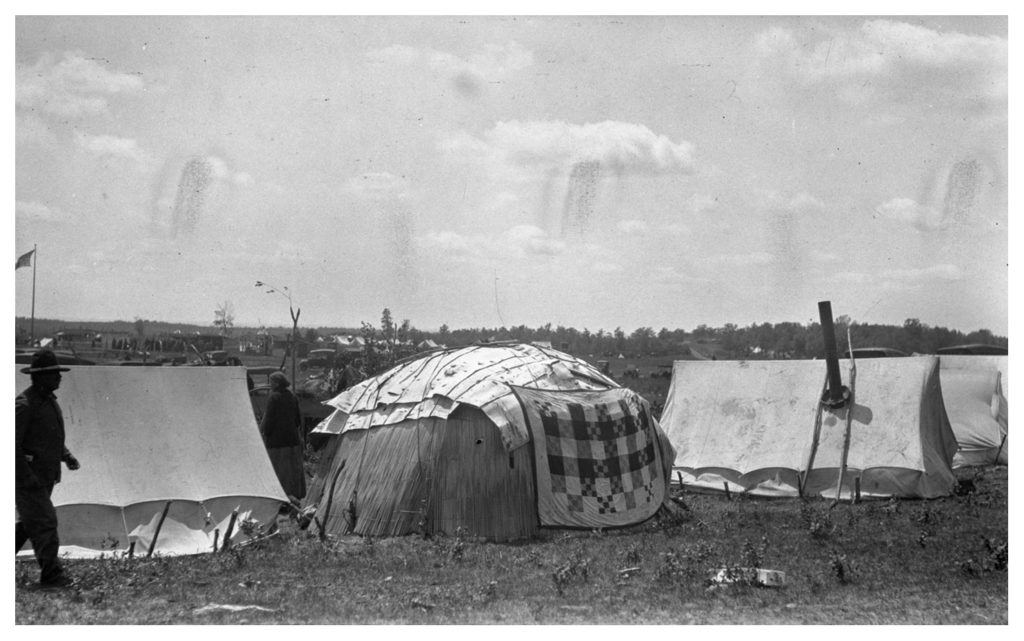Sweating Tent

Walking around Long Sault on Sunday July 17, Jeremiah Johnston and Du Vernet visit “grandfather’s place,” where nearby there is “sweating tent.” Du Vernet describes the “sweating tent” with a keen eye and in great detail: “three willow branches bent for frame of a small tent 3 ft. high. This when being used is covered with a blanket + four stones heated red-hot are placed in it. The person who is going to take the degree sits inside while boiling water is thrown onto the stones.”
A sweat may be conducted for many reasons and is often done for the purposes of physical, mental, and spiritual healing and cleansing. A profoundly emotional and physically challenging experience, going through a sweat often brings psychological and spiritual clarity to people. Sweats continue to be an important path for Ojibwe and other Indigenous groups in North America to pursue health and wellness and are widely practiced.
Christian missionaries often derided the sweat lodge as a “heathen” practice. Interestingly, Du Vernet’s account of the “sweating tent” does not condemn the practice, which is in contrast with his description of the “medicine tent.” Walking with Jeremiah Johnston as his guide, he simply notes several women doing beadwork next to the sweat lodge, and that a “medicine man” was required to take eight “degrees” of a sweat in order to practice. Jeremiah Johnston was undoubtedly the person who taught Du Vernet about the sweat lodge. The quality of Frederick’s observations reveals something of Jeremiah’s familiarity with and perhaps even acceptance of Ojibwe ceremony.